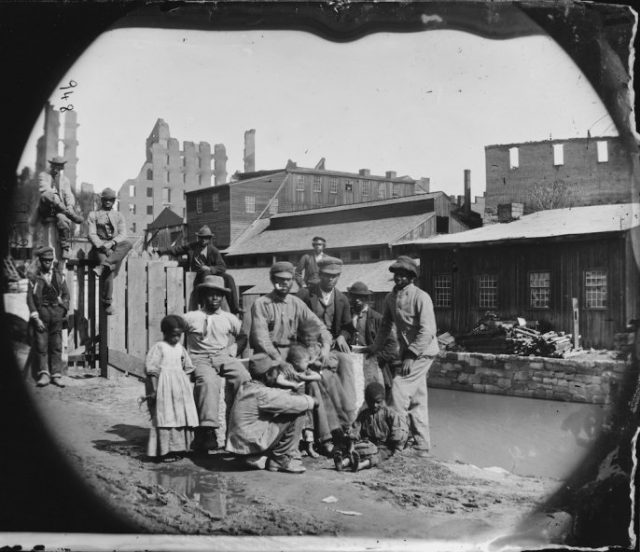By Jacob Hillesheim | Rewire
In June 2003, President George W. Bush and National Security Advisor Condoleezza Rice struck out against the “revisionist historians” they claimed wanted to “rewrite history” by suggesting Saddam Hussein and Iraq posed no threat to the United States.
And while neither Bush nor Rice defined “revisionism,” it was “safe to say that they did not mean it favorably,” historian James McPherson noted.
Contempt or distrust around new historical ideas isn’t limited to world leaders. When I bought my house a decade ago, the home inspector, after finishing his rounds, asked me what I did for living. “I teach history at a high school,” I replied.
He frowned a bit. “You don’t teach that ‘new history’ do you?”
I hadn’t gotten my bill yet, so I threw on the world’s schmooziest smile and promised that I taught “nothing but the truth.”
The truth about telling history
Although “revisionist” and “revisionism” are typically tossed around as insults, every historian knows history is inherently revisionist.
The best way to think about history is that it is provisional. It’s never perfect. It’s just the best a person can do at the time, with the perspectives and information available. And as we gain access to more information — from declassified documents, a series of discovered diaries or interviews with people whose voices have previously been ignored — that provisional story is revised and improved. Think about history as an (extremely polished) “rough draft” constantly inching closer to “The Truth.”
As long as historians challenge historical narratives with open minds and a genuine spirit of inquiry, the result is almost always beneficial. However, when someone questions the historical record with a conclusion in mind, fudging the facts or ignoring inconvenient evidence, you end up with Holocaust denial or another form of historical negationism.
When revisionism gets it right
Our modern understanding of Reconstruction is the best example of how history has been revised for the better. Reconstruction was the post-Civil War period from 1865 to 1877 when the U.S. government, led by “Radical Republicans” in Congress and President Ulysses S. Grant, struggled to reunite North and South and rebuild a new, more equal society in the South.

At the time, the South was in ruins. Thanks to the 13th, 14th and 15th Amendments, as well as a slew of federal laws, millions of former slaves could now vote, own property, serve on juries, attend school and hold political office. These changes shocked white Southerners, and some resisted violently, forming terrorist organizations like the White League and Ku Klux Klan and attacking former slaves and white officials overseeing Reconstruction. At first, President Grant intervened forcefully, using the full power of the federal government to uphold the law.
But due to an economic crisis, a backroom deal to secure the presidency and a lack of white interest in dismantling white supremacy, the country abandoned its commitments to African Americans, handing the South back over to former slave-owners. White Southerners called it “redemption.” In actuality, it the era of Jim Crow had begun.
The ‘Lost Cause’
This straight-forward interpretation of Reconstruction is surprisingly new. White Southerners, unmoored by so much change and hoping to restore their dominance, glorified the Confederacy by reimagining its history and “negating” the historical record.
It went something like this: “The Confederacy fought bravely against overwhelming odds for honor, chivalry and Christian virtue before succumbing to inevitable defeat. Once defeated, white Southerners were exploited by the North.”
Thus, the “Lost Cause” was born, and by the 1910s, even white Northerners had accepted it as the proper understanding of the Civil War and Reconstruction. African Americans and a handful of white allies fought back, but they couldn’t compete with “The Birth of a Nation” and the revival of the Ku Klux Klan.
So, the Confederacy lost the American Civil War, but it won the battle over its memory and meaning. The results were devastating. Segregation, disenfranchisement and lynching went virtually unchecked for 75 years.
Changing the narrative
Thankfully, the achievements of the African American civil rights movement demonstrated that Reconstruction wasn’t a fiasco.
As historian Eric Foner wrote, “The institutions created or consolidated after the Civil War – the black family, school, and church – provided the base from which the modern civil rights revolution sprang. And for its legal strategy, the movement returned to the laws and amendments of Reconstruction.”
The civil rights movement also amplified the voices of African Americans, bringing more perspectives under the historical microscope. By 1990, the “Lost Cause” was dead, although its spirit carries on through Confederate flag bumper stickers and monuments to Confederate generals.
This is historical revisionism, and it not only improves our understanding of the past, but helps create a better present and future. The process continues with new PBS docuseries “Reconstruction: America After the Civil War.” Now that you know how the historical sausage is made, check it out on air or online when it premieres April 9.
![]() This article originally appeared on Rewire.
This article originally appeared on Rewire.
© Twin Cities Public Television - 2019. All rights reserved.
Read Next



